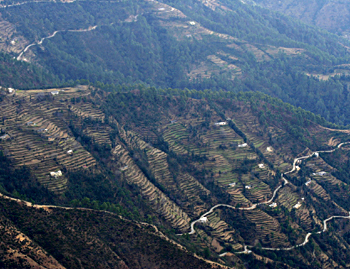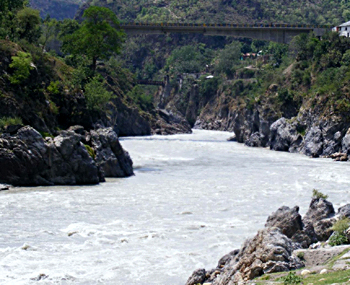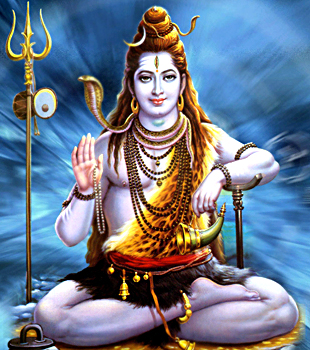 The influences on Indian culture have made it rich and diverse which as a result is unique in its very own way. The Indian culture seeks a wider harmony reconciling spirit with matter, preserving the truths of material science and its real utility. Simultaneously it keeps intact the spirit as the key-stone of the arch of our culture. Adaptation to any culture or embracing a religion is a democratic culture which has been followed in India since centuries.
The influences on Indian culture have made it rich and diverse which as a result is unique in its very own way. The Indian culture seeks a wider harmony reconciling spirit with matter, preserving the truths of material science and its real utility. Simultaneously it keeps intact the spirit as the key-stone of the arch of our culture. Adaptation to any culture or embracing a religion is a democratic culture which has been followed in India since centuries.
Geographical Factors in Indian Culture
The most ancient part of India is The Deccan which was an island when Hindustan was still under the sea. A volcanic upheaval gave the Deccan the peninsular shape while the north cretaceous sea-bottoms appeared above the water and rose to heights nearly double those of the highest peaks of Europe.
The Himalaya Mountains bound India on the north, in a crescent tilted from north-west to south-east. India is, thus, closed on the north of its great river basins and on the east of Bengal. The rest of the country is surrounded by the sea southwards. The Deccan steps at the Nilgiri Hills, east of Kozhikode which is continued in a subsidiary massif which forms Cape Comorin. On the North it begins on the southern slope of the contrary valleys of the River Son and the Narmada River. Along the sides of the plateau run the Western Ghats and the Eastern Ghats. Along the northern edge of the Deccan are the Vindhya Mountains ranges. The Arravalli mountain ranges in the west are the highest part of this terrace, which falls gently eastwards.
 The five rivers of the upper basin of the Indus River form a delta upside down, traversed by rich valleys, while the lower course of the river is between two torrid deserts. The River Ganga runs through fertile land all the way, collecting the streams of the whole southern slope of the Himalaya, but divides its waters in a delta.
The five rivers of the upper basin of the Indus River form a delta upside down, traversed by rich valleys, while the lower course of the river is between two torrid deserts. The River Ganga runs through fertile land all the way, collecting the streams of the whole southern slope of the Himalaya, but divides its waters in a delta.
The geography of India explains the fundamental basis of Indian culture - unity amidst diversity. In the Indians there is a genuine love of the soil and its physical features. The religious culture is rooted to the soil. The geography and culture are intimately related. It was regarded as the Karmabhumi, the land with which all the efforts and activities of the Indians must be specially connected.
Racial Factor in Indian Culture
 Racial factors are responsible for the shaping the Indian culture. Indian history explains the reason why the culture is so rich and multicoloured. Races after races have poured into India and lent their original contribution. Thus India has been referred to as a museum of races. The Proto-Austroloids survive in good many aboriginal people of present-day. The Mongoloid groups are found in Assam, Chittagong Hills and Bhutan. The Mediterranean people are in Kannacla, Tamil, Malayalani, Punjab, Gangetic Valley, Sindh, Rajputana and other places. The Brachycc-phals are well marked in West Bengal, Orissa, Kathiawar, Coorg, Gujarat, along the western coast of India. The Nordics who gave to India its Aryan speech, organisation, imagination, adaptability and basis of Indian culture are strong in North-West-Frontier, Punjab, Rajputana Kashmir, Upper Ganges Valley and in Maharashtra among the Chitpawan Brahmans.
Racial factors are responsible for the shaping the Indian culture. Indian history explains the reason why the culture is so rich and multicoloured. Races after races have poured into India and lent their original contribution. Thus India has been referred to as a museum of races. The Proto-Austroloids survive in good many aboriginal people of present-day. The Mongoloid groups are found in Assam, Chittagong Hills and Bhutan. The Mediterranean people are in Kannacla, Tamil, Malayalani, Punjab, Gangetic Valley, Sindh, Rajputana and other places. The Brachycc-phals are well marked in West Bengal, Orissa, Kathiawar, Coorg, Gujarat, along the western coast of India. The Nordics who gave to India its Aryan speech, organisation, imagination, adaptability and basis of Indian culture are strong in North-West-Frontier, Punjab, Rajputana Kashmir, Upper Ganges Valley and in Maharashtra among the Chitpawan Brahmans.
As a result of these races, the common life has been modified by amalgamating their characteristics and this has resulted in an evolution of a common Indian type and culture. For instance, it is probable that the cult of the ficus tree which is associated with fertility and the dead souls and some ideas about the path of the dead to paradise may have been derived from the Negritos.
The Mediterranean people represented chiefly by the Dravidians who have been responsible for the city culture. They have led India in international trade. Their language forms a solid block in South India. The Dravidians are responsible for commencing the cult of Lord Shiva, the worship of Mother Goddess or Shakti and also the institution of Yoga. They have also given India various symbols associated with these gods and goddesses. Many features of the temple architecture have been of the Dravidian origin. Among the articles of food the Dravidians have given wheat, rice, milk, pulses, vegetables, cotton dress, dwellings, counting on the basis of eight and few customs.
Thus one can derive that that both geography and the racial factors have considerably influenced Indian culture.






































